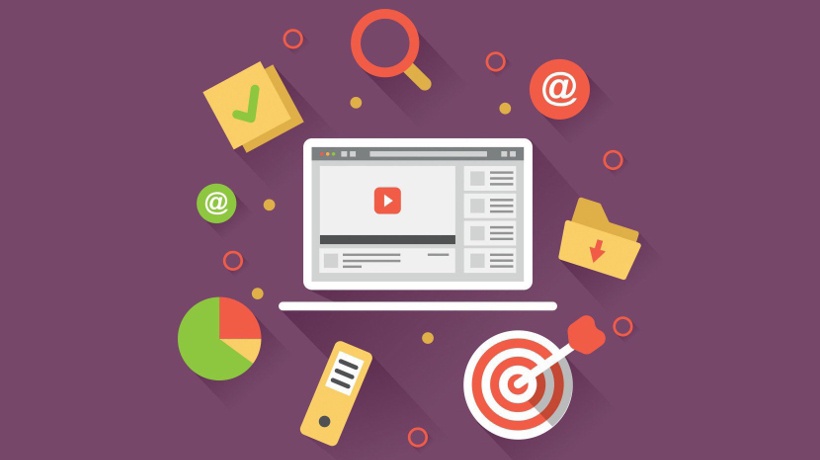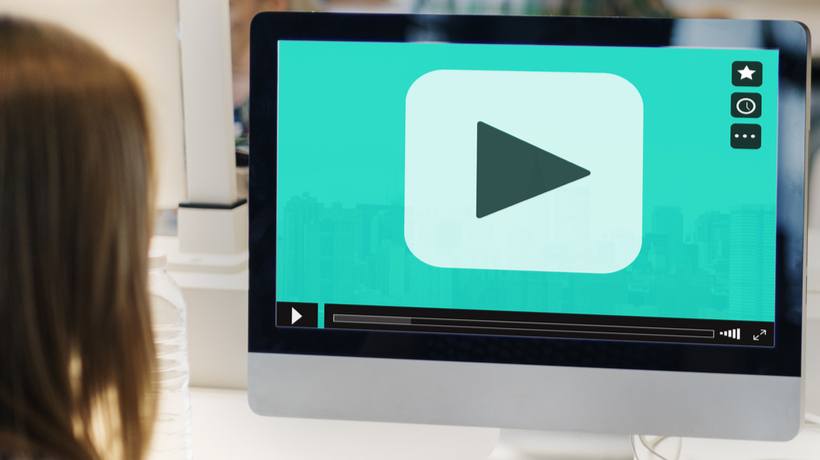What Can Instructors Learn From YouTube
When it comes to fixing things around the house, I was never much of a do-it-yourselfer. Whether it’s a leaky faucet or a sliding screen door that won’t close quite right, my approach was always to let it go for a few months before seeing what I could do with a role of masking tape. Then along came YouTube. Suddenly, I could search for help with whatever home repair problem I was having… and then wind up with an even bigger mess than I had started with.
The problem was my reliance on videos taken by virtuosos in home improvement. In the middle of a tutorial, they’d tell me out of nowhere to grab my slugger wrench, when all I had was a steak knife that I figured could double as a screwdriver and hammer. Or they’d skip certain steps knowing only the most inexperienced home improvers (a.k.a. me) would be unable to make the leap and continue following along.
It might’ve meant the end for me as a do-it-yourselfer. But in time I developed a hack. Anytime I needed help with something, I added a simple two-word phrase to the end of my search query: “For dummies”. All of the sudden, online tutorials made sense to me. I was actually able to fix things around the house. And the more I fixed, the more experienced I became, and the more knowledge I carried.
I became my own eLearning success story.
Here is what I picked from my DIY journey and the 5 things training managers or instructors could learn from YouTube:
1. Segment Your Learners By Skill
Gone are the days when we needed to pack as many people as we could in a conference room and try transferring knowledge through an instructional video. Like YouTube, virtual classrooms allow people to learn on their own, on demand, while mobile. But the learning experiences gained through virtual classrooms offer a lot more. Of course, they can be deeply immersive. And, even on demand, they can deliver the full experience of a media-rich session as if the session were still being held live. But throughout all of this, these lessons remain highly personalized.
Not only can instructors teach to the individual worker, each learner is empowered and incentivized to seek the information he or she specifically needs to gain the desired knowledge or skill. Some of your learners may need to start from square one. Some may need a refresher’s course. Others may quickly lose interest and miss out on the entire “lesson” unless you give them the means to skip ahead. And still there are others who may benefit from the quick, just-in-time “microlearning” that allows workers to isolate their query just to the information they need to complete a certain task. The important thing is to know the skill and knowledge level of your learners going into it, so you can segment your training sessions and audiences accordingly.
2. Create Content That Speaks To The Uninitiated
The problem with most training programs is they speak to learners as if they’re already part of your “all-knowing” world. The most effective DIY videos on YouTube for me are the ones that feature a teacher who barely knows more than I do. Someone who can talk about how they got past the same beginner challenges I was sure to encounter. Not only did this create the kind of micro step-by-step process I would need to save time, it inspired a sense of conviviality that maintained my attention. I liked not being talked down to. I looked forward to learning from this person the next time I needed help with a project. And I was accomplishing more around the house, because the knowledge was successfully being transferred. This doesn’t mean you have to treat all your learners as “dummies”. But you do want to imagine the journey your learners will take to acquire the knowledge you’re trying to convey. Anticipate where your learners might lose you or have questions or else risk people getting frustrated or worse—tuning out.
3. Teach In Quick Bursts
Another great thing about YouTube is how you can quickly find not just the lesson you want, but the exact part of the lesson that most concerns you. As I’ve become a more experienced home improvement expert, I may want to revisit the details of switching out a faucet but scan past the introductory section on all the types of faucets I can choose from. Better yet, I might not want to scan at all and opt for super quick videos that get right to the point. Presenting a session this way might be counterproductive (not to mention contradictory), but at the very least your lectures should be broken down and converted into highly searchable micro-learning sessions that can be made available on YouTube or Vimeo as a video, or on an internal knowledge base as a web page or collaborative wiki, or even as an automated instant message. The benefit here is multifold. Learners can get the specific piece of info they’re looking for from any device exactly when they need it. It is not only the fastest way for a human to apply newly-transferred knowledge, but perhaps also the most accurate since the knowledge is still fresh for the learner and easily updateable.
4. Be Visual
You don’t go to YouTube to read. You go to YouTube to see. It’s a big part of the appeal, but that’s not all: From a learning standpoint, visuals can improve long-term memory retention by 400 percent. But it’s more than mere aesthetics. The visual elements shouldn’t simply decorate information. As often as possible, they should relay information themselves. Take the STOP out of a stop sign, and drivers will still know what to do. Of course, if it were easy to condense volumes of complex instruction into airy designs that are as informational as they are simple and visually appealing, we’d all be doing it. But if outsourcing the graphic elements to a visual designer isn’t an option, you can make lessons more memorable simply by using images that are recognizable, emotionally powerful, and contextual.
For me, a menacing Muhammad Ali standing over a downed Sonny Liston is both recognizable and stirring. But I don’t know if a healthcare manager would have much use for it in a risk management session. Besides, it’s been done. But there are all kinds of other ways to bring visual utility and appeal to your lesson, whether it’s graphics, animation or live action, and YouTube is home to all kinds of great examples. Browsing through cooking, science, life hacker, fashion, and other educational videos can provide a lot more inspiration and know-how than any text-heavy how-to blog, which oddly seem to be the only format available for guidelines on visual design in eLearning!
5. Be Funny Or, At Least, Be Fun
This last suggestion assumes, of course, that you can actually be funny. Subjecting learners to unfunny people trying to be funny isn’t the worst thing you can do, but it’s certainly not the best. But not being funny doesn’t mean not being fun—and that means getting your learners involved. Since its inception, YouTube has added a plethora of interactive features that have been used to great effect. In the beginning, we had Burger King’s Subservient Chicken and Tipp-Ex’s Shoot the Bear. Now with YouTube 360 comes a creepy virtual reality video for Paranormal Activity.
While virtual reality for eLearning is just around the bend, there are lots of ways to be more fun and interactive in your sessions. I’ve seen presenters with soft personalities bring some much needed liveliness to their sessions by drawing from the stronger personalities of their learners. With virtual classrooms, you can use gamification, role playing and more to create both rivalry and collaboration among learners. “Choose Your Own Adventure” story flow is a great way to involve learners while showing them the pitfalls and payoffs of bad and good decision-making.
Spend some time on YouTube where millions of people are brought together by their love for educating, entertaining, or both. Whether the videos you watch are good or bad, you will learn something from them.









